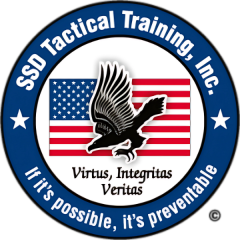(Discounted) Massachusetts, Connecticut, Rhode Island & Utah Multi-State Firearms License to Carry Certification Courses (Live-Fire)
Are you looking for your MA, CT, RI & Multi-State Basic Firearms Safety/ License To Carry Course to apply for your Firearms License? Look no further. We have experienced Instructors and our prices are reasonable. Give us a call today to book your seat with a family owned business that cares about your needs. You will learn:…
MA and/ or CT, Utah Multi-state Basic Firearms Safety Course & Education. ***Discounted***
By taking this course you will learn: Massachusetts, Connecticut and Utah General Laws pertaining to firearms, safe storage of firearms, safe handling of firearms, child proofing firearms, Identifying and unloading different firearms, cleaning firearms, different types of ammunition, traveling with firearms and ammunition on person and laws pertaining to transportation of firearms. At the conclusion of this class you will…
Basic Firearms Safety Course (Live Fire)
You will learn: Massachusetts, Connecticut and Utah General Laws pertaining to firearms, safe storage of firearms, safe handling of firearms, child proofing firearms, Identifying and unloading different firearms, cleaning firearms, different types of ammunition and laws pertaining to transportation of firearms. At the conclusion of this class you will HAVE THE KNOWLEDGE, SKILLS AND CONFIDENCE NECESSARY FOR OWNING…
MA and / or CT Basic Firearms Safety Course (Live-fire) June & July 2024
What You’ll Learn: In this Basic Firearms Safety Course you will learn: Safe handling of several different types of firearms. Firearms storage laws. Self-defense laws. Transportation laws and much more. (The Massachusetts License To Carry (LTC) Class portion with live fire supersedes the requirements for Springfield, MA, Ludlow, MA and Chicopee Police Depts. requiring live fire to apply…
OFFERING: MA, CT, RI & UTAH Basic Firearms Safety Certification Courses June 2024
What You’ll Learn: In this Basic Firearms Safety Course you will learn: Safe handling of several different types of firearms. Firearms storage laws. Self-defense laws. Transportation laws and much more. (The Massachusetts License To Carry (LTC) Class portion with live fire supersedes the requirements for Springfield, MA, Ludlow, MA and Chicopee Police Depts. requiring live fire to apply…
Special Discount MA, CT, RI and/ or Utah Basic Firearms Safety Certification Courses (Includes Live-fire) March 2024
You will learn: Safe handling of several different types of firearms, firearms storage laws, self-defense laws, transportation laws and much more. . (The Massachusetts LTC Class portion with live fire supersedes the requirements for Springfield, MA, Ludlow, MA and Chicopee Police Depts. requiring live fire to apply for a License to Carry Permit.) Topics covered in this class will be Massachusetts…
***Special Discount*** MA, CT, RI and/ or Utah Basic Firearms Safety Certification Courses (Includes Live-Fire)
In this MA, CT, RI and/ OR UTAH (Multi-State) Basic Firearms Safety Course You will learn The Following: Safe handling of several different types of firearms, Firearms storage laws, self-defense laws, Transportation laws and much more. . The Massachusetts LTC Class portion with live fire supersedes the requirements for Springfield, MA, Ludlow, MA and Chicopee Police Depts. requiring live fire to apply for…
